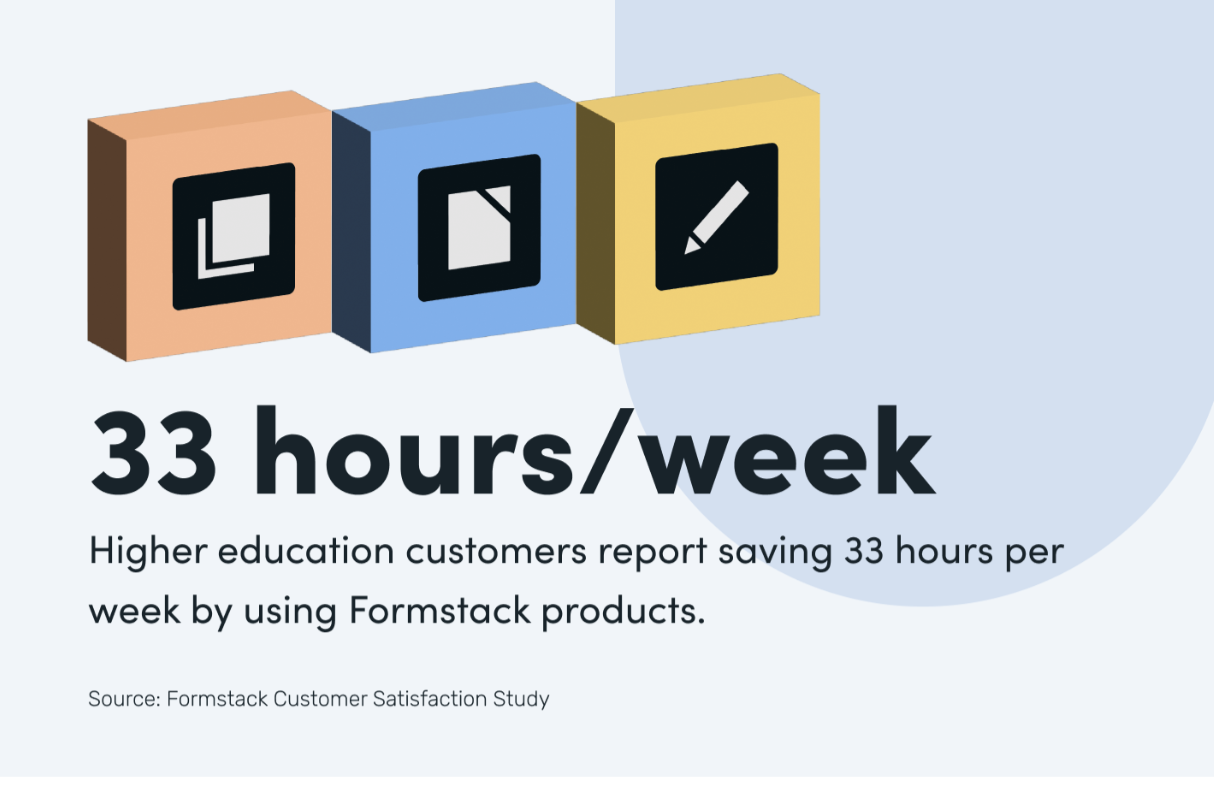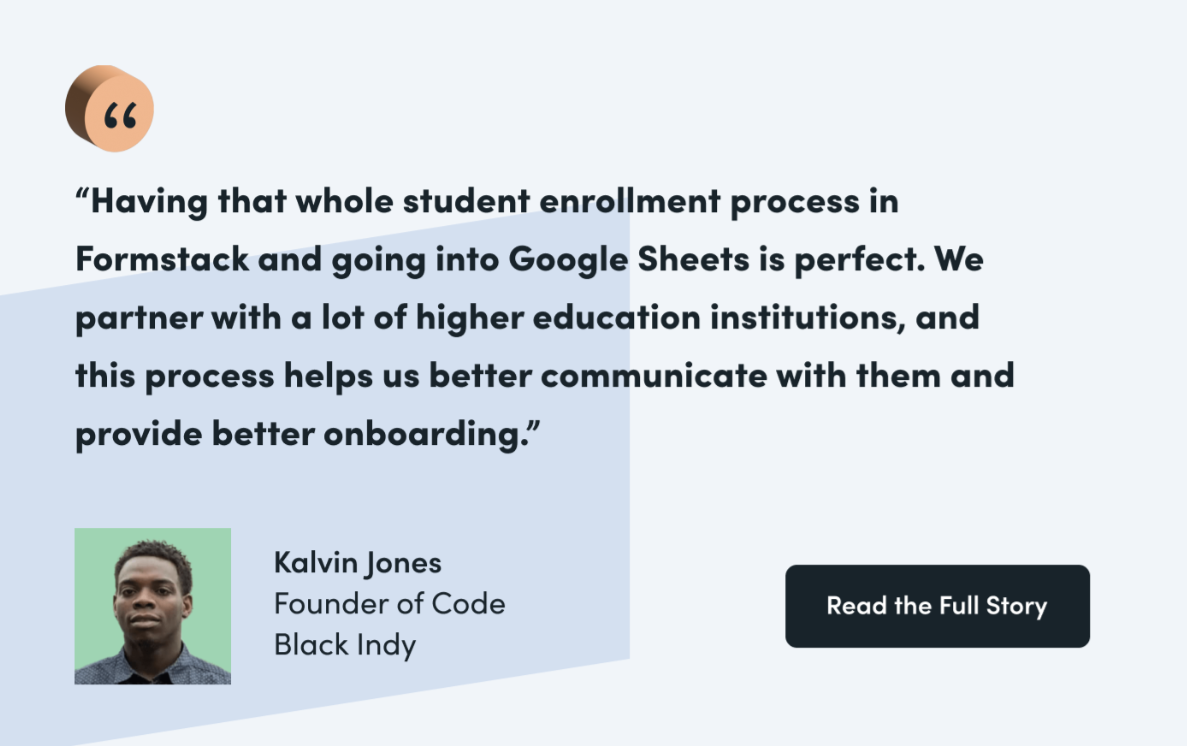Look out, cloud. Research shows worldwide computing in higher education is expected to reach a whopping $8.7 billion by 2027—and it’s not slowing down.
This is no surprise considering how much learning tools have changed since the online-only days of the pandemic. Since then, the overall use of learning technologies in higher education has increased by 19%, with the most significant growth in connectivity and community-building tools, representing a 49% uptick in use. Group work tools also increased by 29%.
Given these numbers, it would be easy to assume these tools are making the lives of faculty, staff, and students easier. Unfortunately, the opposite is often true.
In many instances, the very technology that was meant to streamline and simplify day-to-day, data-based tasks is making workflows more complex.
Yet, there is a way to make all these apps work for you—and the answer lies in streamlining them into a much simpler, university-wide platform.
The Problem: Too Much SaaS = Disorganized Data
Many higher education institutions are increasing their use of cloud-based applications, but some speculate that the benefits don’t yet outweigh the costs. The reason? Investing in multiple services and vendors can add up to significant expenses in the form of onboarding, staff training, and manpower.
In 2023, US organizations each used an average of 130 SaaS applications. However, 80% of these companies have duplicate subscriptions—and only three of 10 organizations know where their cloud spend is going.
Without university-wide policies and programs, it’s possible for one department to sign up and pay for a tool that another department has already onboarded, leading to duplicate subscriptions and extra fees. In some instances, staff members might sign up for new apps but then forget to reassign ownership when they leave, resulting in "orphaned" subscriptions.

In response, finance teams are increasingly scrutinizing university spend. According to a Saas Trends Report by Vendr, “Teams will face continued pressure to consolidate [apps] internally. Throughout this process, finance teams will get closer to understanding how teams use tools and which tools are truly necessary.”
And then there’s the biggest roadblock of all.
If your university lacks a shared vision, it can be incredibly difficult to gain real value from tools and technologies. When different departments work independently of one another, important data can become disjointed. And when higher education data silos occur, everyone suffers.
When data is fragmented across schools, departments, and campuses, it can become incredibly difficult to make informed decisions around resource allocation and programs. Although individual tactics and department-specific goals may be valuable, the lack of collaboration can lead to loss of revenue and fractured student and faculty relationships.
Our State of Digital Maturity report discovered the same. It found that 72% of workers think inefficient processes negatively impact their job. When higher education institutions lack digitization and automation, employees report higher levels of stress, frustration, and overall dissatisfaction.

Watch It: Data silos create disorganized and misplaced information. But how can you integrate all of your data without wearing out your IT department?
The Solution: One University-Wide Platform
So, how can you ensure your institution is making the most of its resources? It all comes down to your technology choices.
One of the easiest ways to prevent higher education data silos is to invest in a university-wide platform. This type of software brings multiple workflows together into one central system, allowing departments to use the same tool and gain access to the same centralized data.
Put simply, you can combine resources, eliminate duplication, and ultimately remain poised for innovation.

When choosing a solution, look for a robust platform that allows you to:
Simplify data collection.
To make the most of your higher education data across campuses and schools, it’s important to have one central system for collecting, storing, and reporting information. This is critical for recurring higher education processes like new student acquisition and enrollment. As part of this process, you’ll need online forms that are easy to create and fill out, and that keep information organized so it’s easy to access and analyze.

Streamline workflows across departments.
With the right type of higher education digital automation, information flows freely between departments. Not only do you eliminate the need for manual data entry, but you also save hours on otherwise time-consuming tasks that come with financial aid applications, admission reviews, student communications, and more.
Hiring new faculty and staff? Everyone, from the hiring department to administration and HR, can stay in the loop with workflows that automatically flow from one checkpoint to the next. That way, no step is missed and every stakeholder has a say.


Integrate all of your apps.
When it comes to unifying everyone around common goals, built-in connections are essential.
Most likely, you use a third party system for gathering and processing university donations. But if the platform doesn’t integrate with your other systems, it can be difficult to keep track of how much each donor gives, send thank yous, and follow up with tax forms.
Look for a platform that offers an extensive array of native integrations that make it easy to add and remove apps as needed. That way, staff can continue to collaborate across departments while using the tools that are most productive for each individual team.

Avoid wearing out your staff and scaring away potential students with slow procedures. By using education automation, you can create reliable, efficient systems that boost employee happiness, impress students, and save your organization time and money. With a unified approach, your institution can get as much as possible from technology—and ensure the best possible experience for faculty, staff, students, and alumni.
Looking for a solution to rally departments around a shared vision? No matter your campus size, Formstack can help unify data and streamline workflows across departments.












